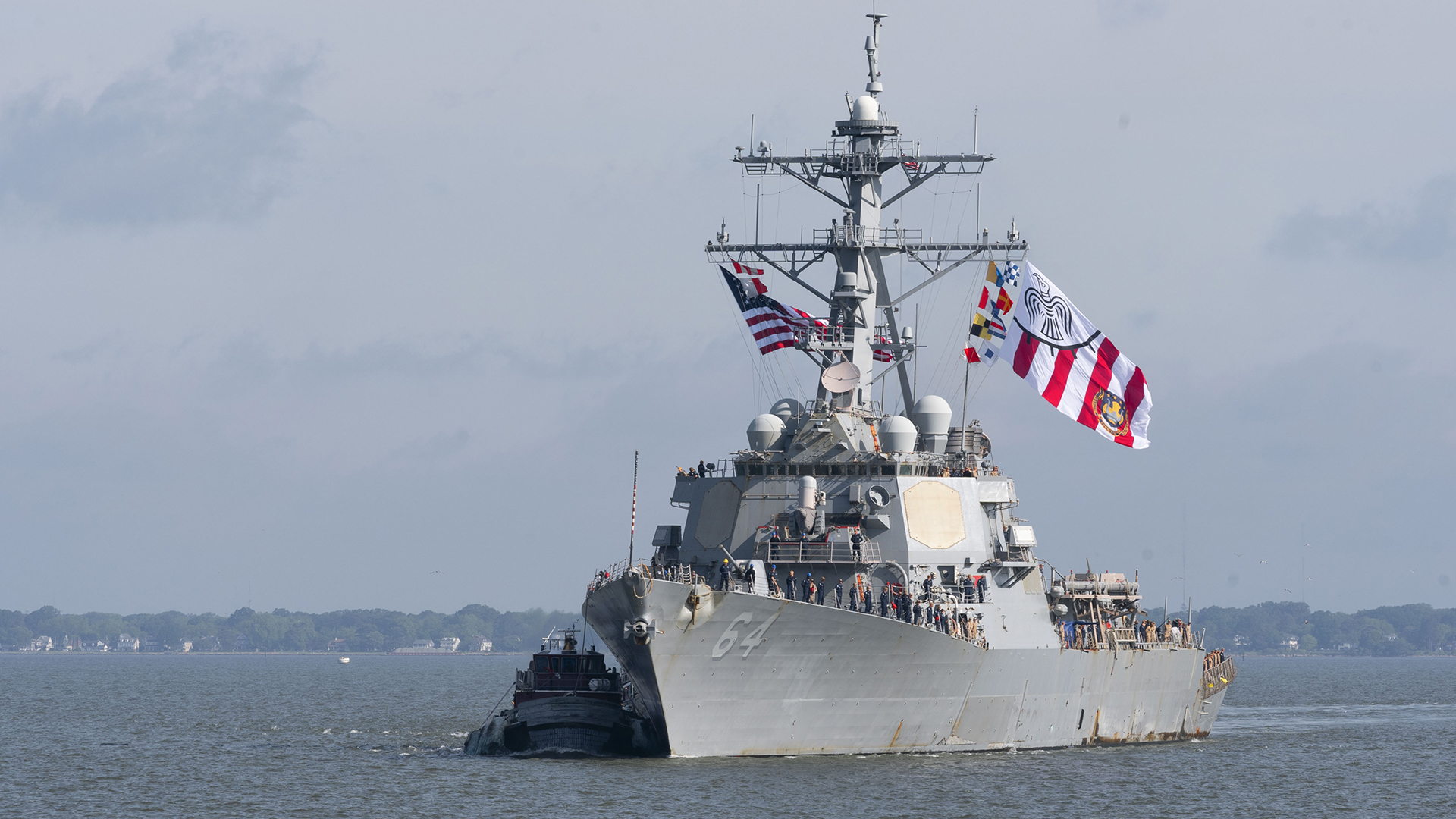As the Arleigh Burke class guided-missile destroyer USS Carney (DDG-64) returned from a historic deployment to the Middle East, the Navy offered new insights into the warship’s engagements with the Iranian-backed Houthi rebels.
Over the course of about six months on station in the Red Sea region, Carney’s crew destroyed 65 Houthi targets launched from Yemen and on the ground there, according to the Navy.
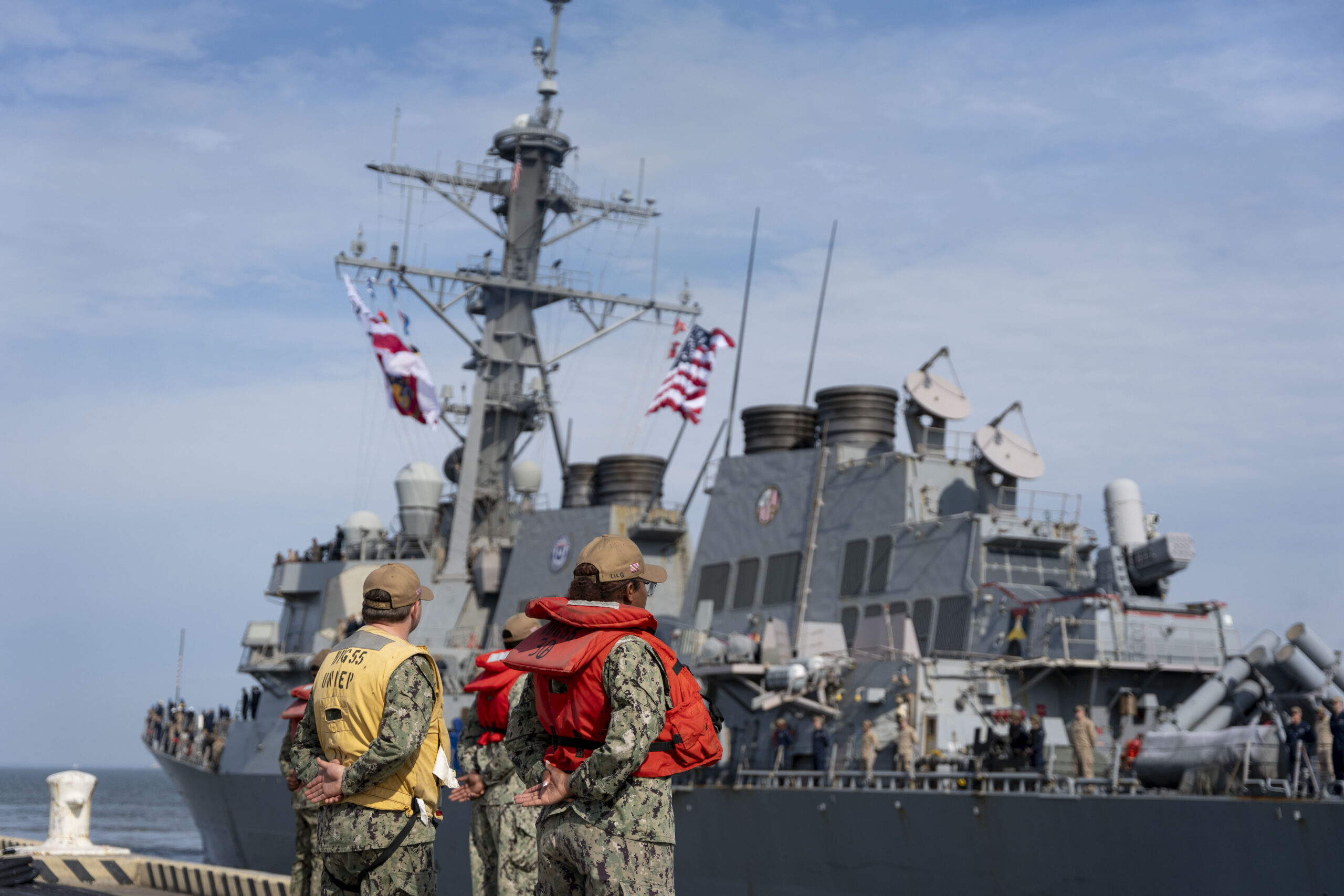
The Carney had “51 engagements” with the Houthis, Chief of Naval Operations Adm. Lisa Franchetti, said during a speech welcoming the ship back to the U.S. last week.
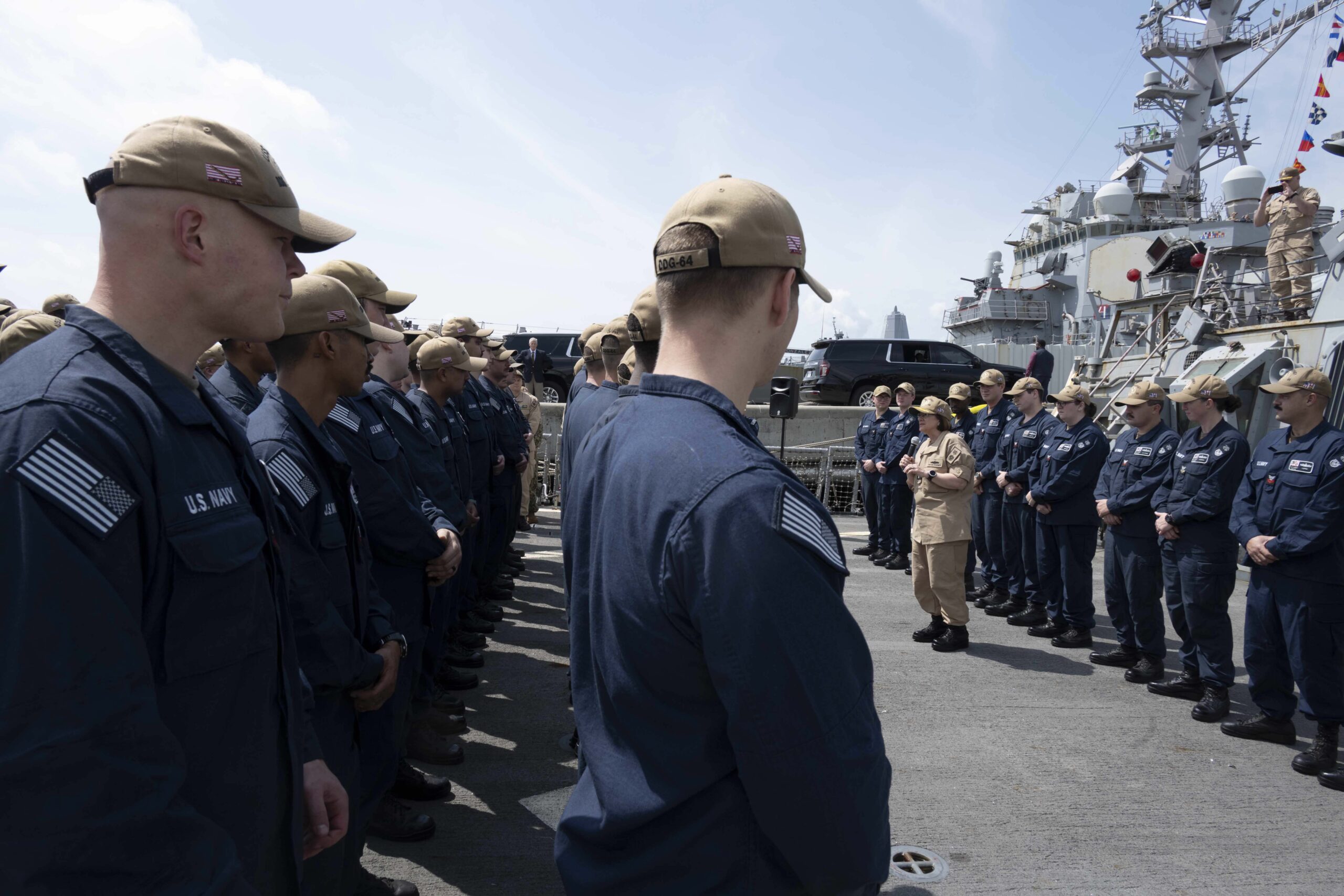
Franchetti didn’t specify what those engagements entailed. However, the Navy release further stated Carney “successfully destroyed 45 Houthi-launched weapons, including land attack cruise missiles, anti-ship ballistic missiles, and unmanned systems.” In addition, the ship “conducted two defensive strikes against Houthi targets in Yemen, destroying 20 targets.” It is unclear what happened in the six engagements against Houthi-launched targets that did not result in destruction.
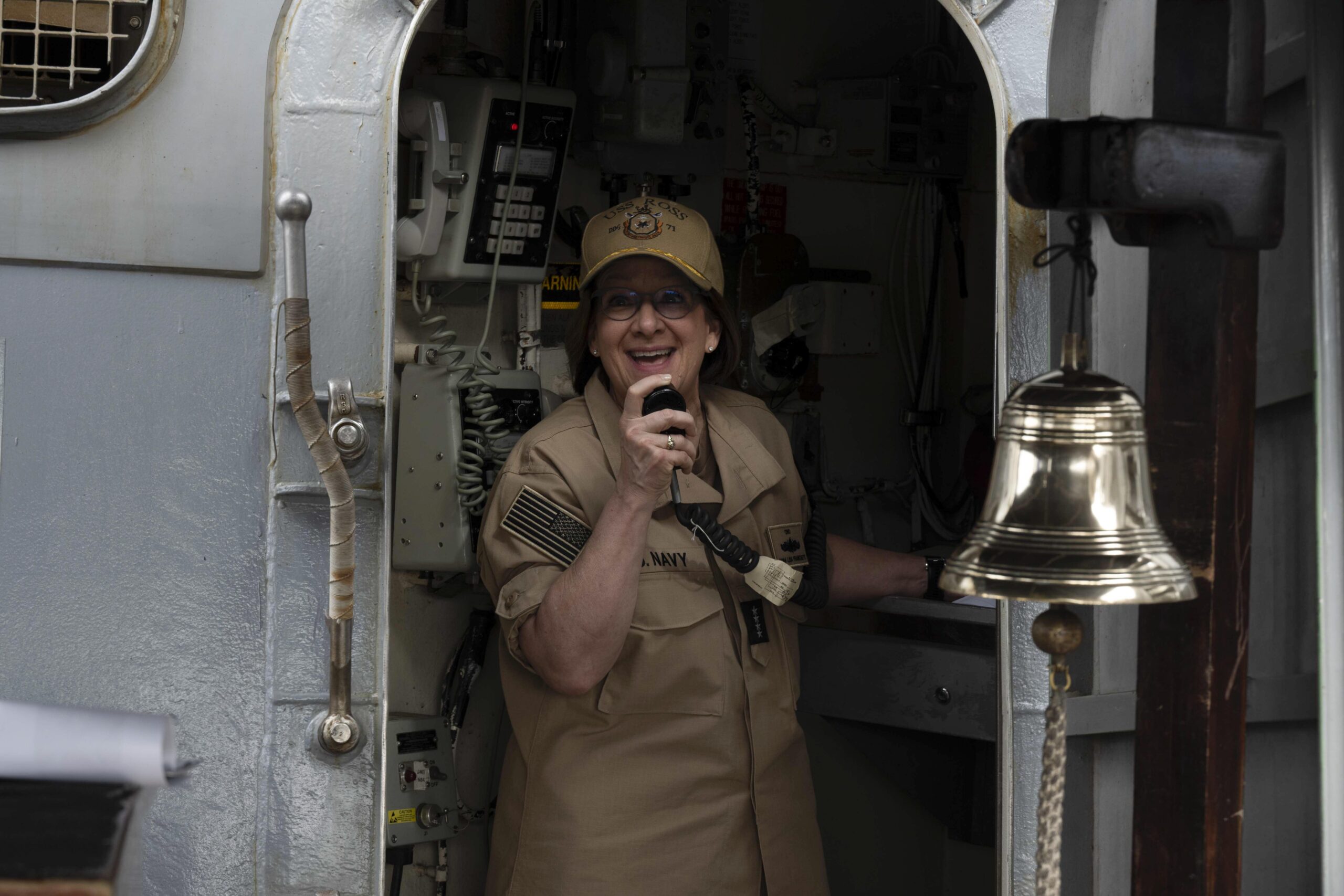
Carney also made history last month, when it was one of two Navy ships to deploy Standard Missile-3 (SM-3) anti-ballistic missile interceptors in combat for the first time. That’s something we first postulated may have happened, which was later ultimately confirmed.
While the SM-3s have been in the Navy’s arsenal for years, they hadn’t been used against actual threats until the massive April 14 Iranian missile and drone barrage against Israel. Carney and USS Arleigh Burke downed a reported four Iranian missiles during that attack. However, that claim was later disputed. Israeli journalist Amir Bar Shalom of Israeli news outlet Galai Tzahal reported that only two of eight SM-3s launched by the U.S. hit their targets. The Navy declined to comment on which version of events, if either, was correct, citing operational security concerns. They pushed us to the Pentagon and we are awaiting a response.
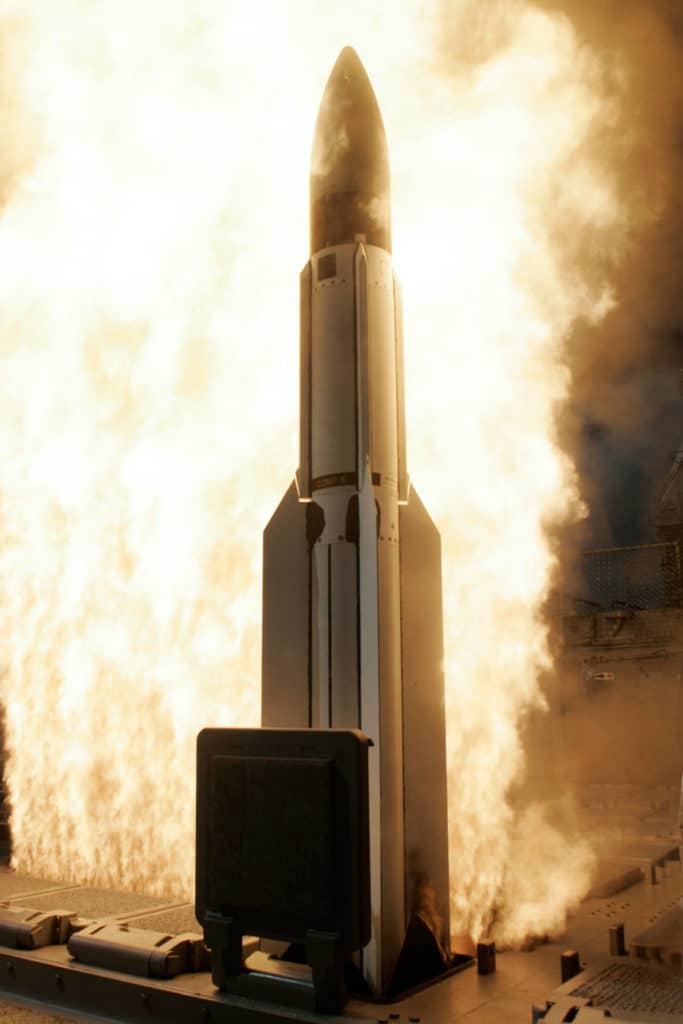
The Carney was also reportedly the first warship to fire the U.S. Navy’s SM-6 missile, in that instance against a Houthi anti-ship ballistic missile (ASBM) in the Gulf of Aden in January. As we have discussed in the past, the SM-6 offers some unique capabilities, including defense against incoming ballistic missiles in the terminal phase of flight, which appears to have been the case on that occasion.

The ship’s deployment to the Middle East came after the Houthis began lobbing ballistic and cruise missiles as well as aerial and sea drones at military and commercial vessels in the Red Sea, Bab al-Mandab and Gulf of Aden, as well as Israel. The Houthis started their campaign after Israeli Defense Forces responded to the Hamas Oct. 7 surprise attack with punishing air strikes and a devastating ground assault. You can read more about the Houthi’s anti-ship missile arsenal in our deep dive here.
The Carney’s engagements with threats launched by the Houthis, provided by a U.S. defense official:
- March 6: An anti-ship ballistic missile (ASBM) was launched from Iranian-backed Houthi-controlled areas of Yemen toward M/V True Confidence, a Barbados-flagged, Liberian-owned bulk carrier, while transiting the Gulf of Aden. The missile struck the vessel, and the multinational crew reports three fatalities, at least four injuries, of which three are in critical condition, and significant damage to the ship. The crew abandoned the ship and coalition warships responded and are assessing the situation. This was the fifth ASBM fired by Houthis in two days. Two of these ASBMs struck two shipping vessels – M/V MSC Sky II and M/V True Confidence. The Carney shot down one ASBM.
- March 5: CENTCOM forces shot down one ASBM and three one-way attack unmanned aerial systems launched from Iranian-backed Houthi-controlled areas of Yemen toward Carney in the Red Sea. There are no injuries or damage to the ship.
- Feb. 2: Carney engaged and shot down one unmanned aerial vehicle (UAV) over the Gulf of Aden. There were no injuries or damage reported.
- Dec. 16: Carney engaged 14 UAVs in the Red Sea.
- Nov. 29: Carney engaged a UAV headed in its direction in the southern Red Sea while the ship was escorting two other vessels
- Oct. 19: Carney (DDG 64) took out multiple Houthi missiles and unmanned aerial vehicles in the Red Sea.

Carney left Naval Station Mayport on Sept. 27, 2023, on a scheduled independent deployment to the 6th Fleet area of operations (AOR), which includes Europe and Africa, then pivoted to the 5th Fleet’s, which covers the greater Middle East. It entered that area on Oct. 18, 2023, when the Houthi barrage began.
During its time in the Red Sea region, the Carney was one of several U.S. and allied warships to battle the Houthis. The Iranian-backed group that controls a large part of Yemen had launched more than 110 attacks on shipping during this period.
As we previously reported, in one such incident in January, the USS Gravely swatted down an anti-ship cruise missile with its Mark 15 Phalanx Close-In Weapon System (CIWS). That marked the first time a Navy surface combatant was forced to use its CIWS during the fight against the Houthis.
In March, several U.S. and allied ships, as well as allied aircraft, downed dozens of Houthi drones. The United Kingdom, France, and Denmark intercepted a combined 10 drones out of the 28 shot down over several hours. U.S. ships and/or combat aircraft also shot down a number of drones. Other allies may have done so, as well. You can read more about these encounters in our original story here. It was one of a number of engagements against the Houthis involving allied assets. You can see an image from that battle below.
There are currently two self-described defensive naval task forces operating in the region. These include the U.S.-led Operation Prosperity Guardian, which includes the U.K. and other international partner forces, and the E.U.-centric Operation Aspides (shield) which is made up of French, Italian, German, and Greek surface combatants and other capabilities. The U.S. Navy’s attacks on Houthi ground targets, including those by the Carney, were not part of either of those operations.
For their actions, Franchetti recognized 14 sailors “for their outstanding achievements while on deployment,” the Navy release stated.
“As Surface Warriors, we train to this,” Franchetti told the sailors. “We train to this level of readiness and boldness, with a clear commitment to the warfighting excellence that you all exhibited on the world stage for everyone to see. You did exactly what you were trained to do.”
Carney is expected to return to Mayport later this month. Once there, the crew will get a well-deserved break and the ship will receive the land-based attention it needs after so many months undergoing some of the most intense action a U.S. Navy warship has experienced in long time. An image of the ship leaving Norfolk was posted online, which you can see below.
Its deployment highlights the ongoing importance of the Navy’s surface combatant fleet, a continuing need in the short term in the Red Sea region.
Just yesterday, the Houthis launched another aerial drone over the Gulf of Aden, which U.S. Central Command said it destroyed.
Contact the author: howard@thewarzone.com
